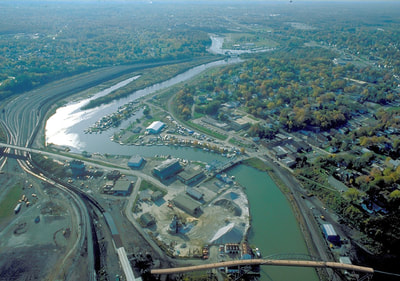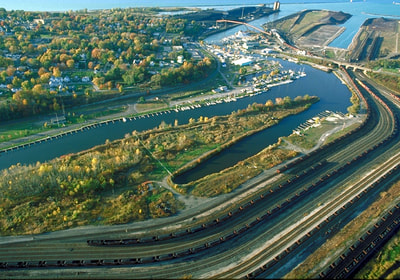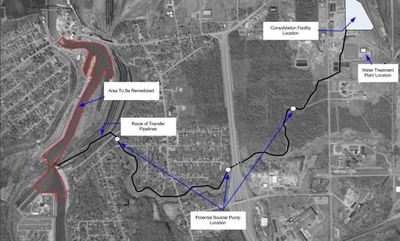The sediment cleanup of the Ashtabula River is complete!
A Great Lakes Legacy Act (GLLA) sediment cleanup removed 497,000 cubic yards of PCB-contaminated sediment from the Ashtabula River in 2006 and 2007. Contaminants were transported to a landfill by a pipeline for disposal. The landfill was constructed to dispose of contaminated sediment from the Ashtabula River. The GLLA project was funded by the U. S. EPA and the Ashtabula City Port Authority, with contributions from the State of Ohio and a number of local industries.
The Ashtabula River gets its name from the Iroquois word Hash-tah-buh-lah meaning "river of many fish." More than a decade later, the Ashtabula River is once again a destination for recreational boaters and fishermen in northeast Ohio.
The Ashtabula River gets its name from the Iroquois word Hash-tah-buh-lah meaning "river of many fish." More than a decade later, the Ashtabula River is once again a destination for recreational boaters and fishermen in northeast Ohio.
Location
Cleanup Process
|
Sediment remediated: 497,000 cubic yards
Contaminants: PCBs Method: Hydraulic dredging When: 2006–2007 Partners: U. S. Environmental Protection Agency, Ohio Environmental Protection Agency, Ashtabula City Port Authority Cost: $57.6M Long-term Benefits
|
|
More Information
Documents and Resources
Great Lakes Areas of Concern: Six Strategies to Support Community Revitalization (PDF, 8p, 987KB) 2024
Ashtabula’s Revitalization: The Ashtabula River Area of Concern (video, 4:39), 2022
Ashtabula River sediment disposal facility (PDF, 1p, 916KB) September 2006
Ashtabula River sediment cleanup fact sheet (PDF, 2p, 260KB) December 2005
Great Lakes Areas of Concern: Six Strategies to Support Community Revitalization (PDF, 8p, 987KB) 2024
Ashtabula’s Revitalization: The Ashtabula River Area of Concern (video, 4:39), 2022
Ashtabula River sediment disposal facility (PDF, 1p, 916KB) September 2006
Ashtabula River sediment cleanup fact sheet (PDF, 2p, 260KB) December 2005






